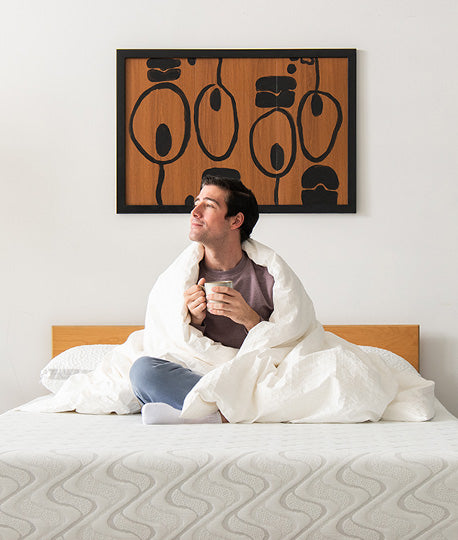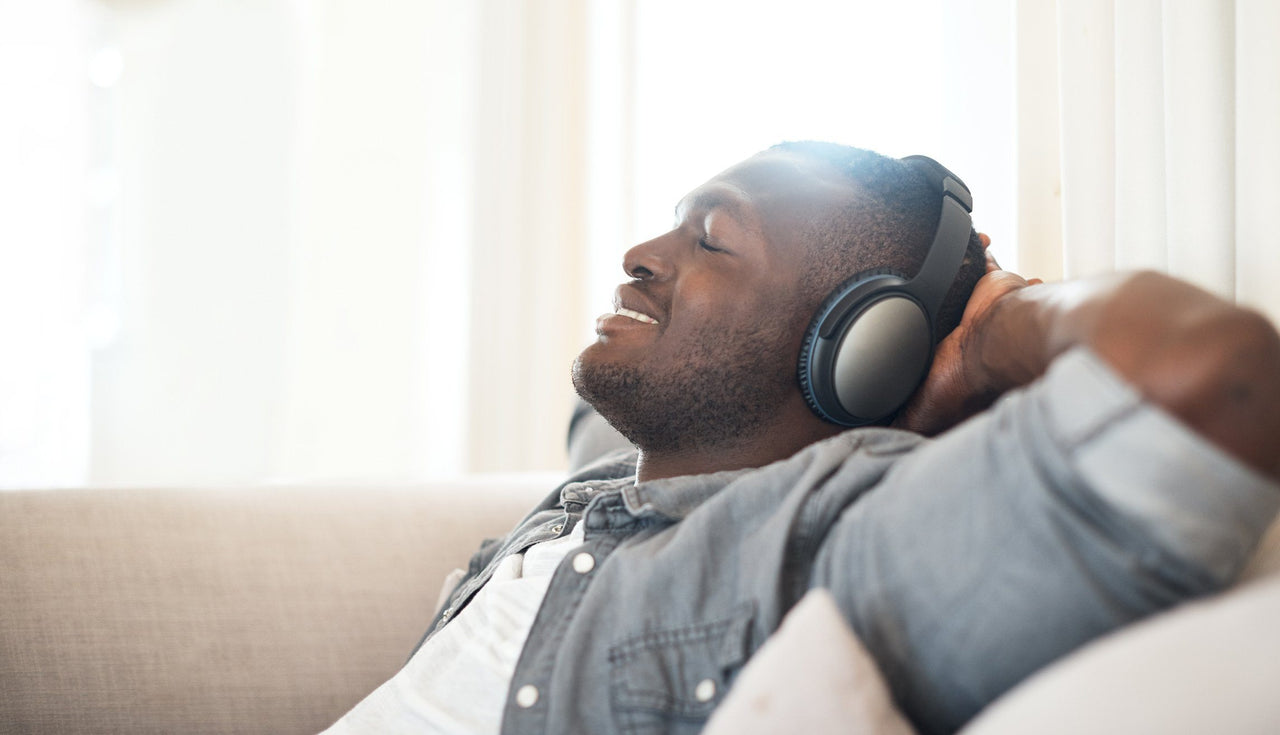
There you are, staring at the ceiling willing yourself to sleep. You glance at your phone to check the time and start doing mental math. "If I fall asleep right now," you tell yourself, "I can get six hours before my alarm goes off." Thirty minutes later, you check again. "If I fall asleep right now, I can get five and a half hours." Twenty minutes later, well, you know the drill.
An occasional night of this neverending clock-checking and watching your precious and much-needed rest whittle itself away as you toss and turn is terrible enough. But what about when it happens regularly? What about when it happens every night? In these moments, we can be desperate for a solution that will help us get the shuteye we need to function and wake up feeling refreshed and ready to face a new day.
Many people are now turning to binaural beats as a method for increasing their likelihood of traipsing away to dreamland.
What are binaural beats?
Binaural beats have become incredibly popular as a meditative tool that helps people channel their mental focus in a way that fits their desired goal for the moment.
At the core, the concept behind binaural beats is very simple. It occurs when a listener has sounds channeled into each ear (typically via headphones). One side is playing a beat that is slightly lower than the other. The difference between the two has a physical impact on the listener. There are more technical elements to it, and a 1973 Scientific American article provides a lot of the details relevant for modern practitioners. The tones must have a difference of no more than 30 hertz between them, and they must be below 1000 Hertz.
A good metaphor for the impact that binaural beats has on the brain is an optical illusion. If you have seen the famous duck-rabbit illusion, then you have recognized the way that our brain processes visual difference. If you glance at the optical illusion for the first time and see a duck, but then look at it again and see a rabbit, your brain now has to reconcile the differences in perception. This reconciliation is called a gestalt shift, and the work that your mind does to undergo this shift is a robust process that can generate new ideas, spark solutions to challenges, and help people on opposite sides of a debate find a path forward instead of staying locked into their own perspectives.
Binaural beats do something similar for the way that we process sounds. Our brain hears both frequencies simultaneously and tries to handle the difference, creating—essentially—a third sound that isn't there. The processing of the difference produces something entirely new. Just as our visual processing switches back and forth from duck to rabbit (or blue dress to white dress) to create our understanding of the image as an optical illusion, our aural processing between the two tones establishes an understanding of the sound as a whole, something more significant than the sum of its parts.
What do binaural beats do?
People who use binaural beats as a meditative tool swear by the power they have to change moods and enhance focus. The proponents of this practice talked it up so much that some started referring to them as "digital drugs" and parents even began to worry that their teens would use the music to get "high." While experts have assured parents that the music is not capable of the mind-altering effects of drugs, studies have shown a real, measurable impact.
So what does that impact entail? Well, those who are fans of the practice say that there are different beats for different desired effects. Our brains produce waves detectable by an EEG, and these waves fall into categories based on their speed (measured in Hertz). When looking at a reading of brain waves, the one that is most dominant indicates the state of mind and level of consciousness. There are five ranges, and from fastest to slowest they are gamma, beta, alpha, theta, and delta.
Since binaural beats occur within a particular range of sound frequency, specific frequencies can be chosen to create the desired outcome. If someone is looking to find inspiration and energy, they might use a binaural soundtrack that uses gamma beats. A research study from Frontiers of Human Neuroscience published in 2013 found that gamma beats (and alpha beats, too) were able to increase the level of divergent thinking—the type of thinking that leads to new ideas, creativity, and problem-solving.
So, can binaural beats help you sleep? Those looking to sink into a deep meditative state or drift off to sleep may benefit by theta or delta frequencies. These slow frequencies are designed to make the brain relax, a key to finally getting that much-needed rest.
How do you use binaural beats for sleep?
First of all, it's important to remember that binaural beats only work if each ear receives a different sound frequency. That means that you need to be wearing headphones. You'll want to consider your comfort and choose headphones that aren't going to make it difficult for you to lie in your preferred sleeping position or that are going to be popping out of your ears. The restful impact may suffer if you're fiddling with your earbuds.
Once you've found headphones that will work, the next step is to get some binaural beats to play as you lie down for the night. There are plenty of commercial options available and even apps for purchase that will give you binaural beat playlists, but you can also find plenty of tunes for free on YouTube or Spotify.
Pair your binaural beat experiment with other surefire methods for getting a better night's sleep. Stay off screens in the hour leading up to bed, turn off lights, use a diffuser with a calming scent like lavender, and try taking deep, relaxing breaths as you drift off (or try the 4-7-8 breathing trick for an added dose of relaxation). Of course, drifting off while enveloped in comfortable, supportive bedding is an excellent foundation for any other sleep method, and Nest Bedding is happy to make sure you've got everything you need for a great night's sleep.
While research shows that (just like the ability to see optical illusions) not everyone is capable of discerning the difference in binaural beats, the evidence is there to suggest that these auditory illusions can make a real difference in concentration and mood. Since there are so many options freely available that you can use on equipment you likely already have at home, this is a great low-risk method for catching some of those elusive ZZZ's.





